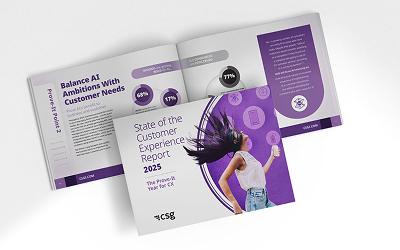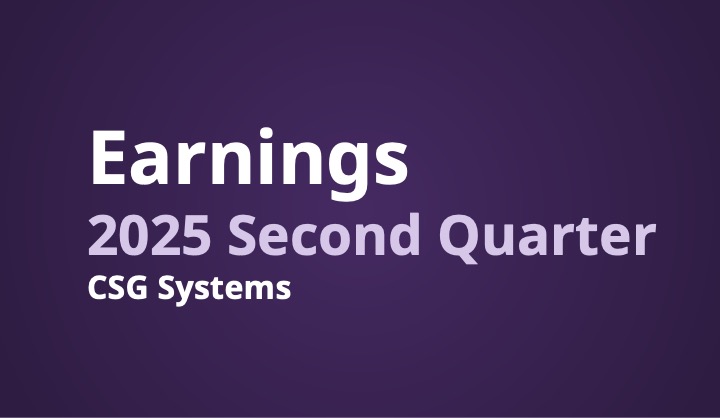Marketing today is in a contradictory flux. In many ways, it looks like it has for decades before. Every day, thousands of batch emails are processed to target lists, and ads are shown to customers on a billboard (or online).
But in many other ways, marketing has evolved dramatically. Intelligent marketers and CX leaders are already beginning to adapt. Two related trends—the expansion of marketing scope, and the growing sophistication of CX—are on course for a merger. With the unprecedented connectivity of today’s world, a cohesive customer journey is the only way to satisfy customers and provide them with innovative, bold experiences.
MARKETING IS BEGINNING TO LOOK LIKE CX
To start, we should discuss what CX is and isn’t. It isn’t only reacting when things go wrong. Instead, CX is the practice of supporting the business’ efforts to make customers satisfied, to keep people enjoying the experience of interacting with a brand. CX practitioners manage the entire customer journey, striving to solve problems and make each interaction with the brand as positive as possible.
WHAT DOES IT MEAN FOR MARKETING TO LOOK LIKE CX?
Marketing has been trending towards a wider scope for many years now, embracing more and more channels in an effort to influence customer behavior. Like CX practitioners, marketers have always cared about customer perception.
The difference now is that CMOs and marketers are being charged not only with ensuring the right copy, ads and promotions are being run in the right places, but also with delivering a consistent and seamless experience, from acquisition to conversion to growth. Because the scope of marketing has grown, marketers in recent years have had to tear down the barriers between parts of their own organizations, mimicking the work that CX as a practice has done for many years.
Marketing has always been about automating messaging sent to customers. The difference now is that marketers are beginning to support customer journeys, much more like what CX has tried to do from the very beginning. This new reality means marketers need to have the right message ready for customers, no matter the channel and no matter the time.
BRANDS HAVE BEGUN TO ADAPT
Many brands have similar problems. With siloed communications and data for lead generation, retention and growth channels, it’s difficult to share information and data across the organization. By looking at marketing challenges from a customer-centric point of view, you may be able to reveal new insights that a marketing perspective alone would not.
A customer doesn’t see your company as a dozen business units each with a half dozen teams. They only see one business and expect the proverbial left hand to know what the right hand is doing. By using customer engagement tools to stitch systems together, connect data and drive your tools with business intelligence, you can eliminate silos, making each part of your business interact with your customers in a single voice.
Many marketing departments are realizing that CX is the next competitive battleground for their businesses. To be competitive, they have to make the transition from marketing to sales to service seamless. It’s not an easy task, but marketing has the tools and data to make these connections. By thinking and acting more like CX, marketing has begun to get smarter about their customers.
BUT CX IS ALSO BEGINNING TO LOOK LIKE MARKETING
How can it be that CX is beginning to look like marketing when the inverse is also true? The idea of customer experience as a practice is an old one, but has only recently begun to truly come into its own. The founding of the CXPA back in 2011 in many ways signaled the shift from CX as a person within the business who looks for and solves problems, to a person or team within the business that finds larger solutions, proposes structural changes and tracks customer responses. CX leaders may even employ powerful mapping tools to map out and explore customer journeys from a listening perspective.
For a long time, CX had been a mode of thought around managing problem situations that the customer might experience. Consider an airline that had to handle customers missing their flights due to delays at the ticket counter. In the old school of CX, they would have simply found the right amount to compensate the customer. They would then have helped them get booked with a new flight. Finally, they would identified what went wrong in the first place and recommend changes.
Those are still part of the CX role within the business, but today’s CX professionals do much more than that. They’ve begun to reach into outbound communications and influence overall engagement strategy.
TECH ISN’T JUST FOR MARKETERS ANYMORE
The adoption of technology to better understand the current state of the market and customer base is one of the key ways that CX has already been shifting to look like marketing. This trend has been accelerating. The growth of professional organizations and technology solutions catering to CX teams has forced those teams to evolve. CX professionals have begun to not only use technology in a style more reminiscent of marketers, but they’ve also started to approach problems in some of the same ways.
Marketing research and data analysis have long been part of marketing and the technology has long been caught up with marketing needs to address these particular challenges. Today, we see technologies made specifically for CX. Several new technologies for voice of the customer (VoC) surveys have come out over the past several years. These new systems have allowed CX leaders to use tools and technology to answer questions that used to require many hours of work in a much shorter time. Yet even with these new technologies, CX teams have often struggled with the sheer volume of data at play.
LEARNING FROM MARKETING’S EXAMPLE
The advent of big data in previous decades created challenges for marketing organizations similar to the ones still facing CX teams. With increased segmentation demands, campaign management solutions and consulting became enormous businesses. This growth drove innovation in technology, practices, and strategy that are still relevant today. CX is still in the early stages of a transformation.
HOW CUSTOMER JOURNEYS EMPOWER BOTH MARKETING AND CX
Customer journeys follow every touchpoint and interaction that your brand has with a customer, every thought the customer has about your brand, and even conversations about your brand that your customers have with friends entirely away from your influence.
The smartest brands measure every step that a customer takes on their channels. Then, they use the information gathered there to influence every future step. Sometimes the best thing is to do nothing, or wait, but each activity is data to discover and analyze. This is where journey analytics comes into play. Not only for initial journey discovery, but also for ongoing discovery and analysis of success.
THE FUTURE OF CUSTOMER JOURNEYS
While CX and marketing teams are still growing their capabilities and have much to learn from each other, CSG is here to help bridge the gap. With our unique offering, CSG Xponent™, you can truly understand, manage and sync data everywhere your customers interact.
If you want to learn more about how vendors stack up in the customer journey analytics space, check out the recent Spark MATRIX™ report, where CSG earned a spot as a Technology Leader.










